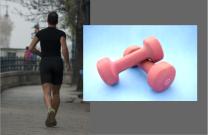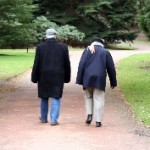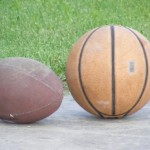 Diet and exercise have long been accepted as the foolproof way to lose weight. You might say they go together like love and marriage. For a lucky few, exercise alone can make up for a host of dietary sins. For the rest of us, both the diet and exercise bases need full coverage. The question then comes down to which type of exercise works best at melting off the pounds. And do you need to practically kill yourself like a contestant on The Biggest Loser?
Diet and exercise have long been accepted as the foolproof way to lose weight. You might say they go together like love and marriage. For a lucky few, exercise alone can make up for a host of dietary sins. For the rest of us, both the diet and exercise bases need full coverage. The question then comes down to which type of exercise works best at melting off the pounds. And do you need to practically kill yourself like a contestant on The Biggest Loser?
There are two basic forms of physical exertion: aerobic and anaerobic.
Aerobic activity requires the presence of oxygen in order to burn energy in muscle cells in response to signals from your brain to contract them. Anaerobic activity on the other hand expends energy without utilizing oxygen. Instead, it’s able to burn energy without oxygen, but as you can imagine, your muscles can’t do this for very long. You can go a whole lot longer without food than you can without oxygen. Your muscle cells eventually crave oxygen and fatigue quickly sets in. The burning sensation you feel when doing a grueling set of barbell curls is the result of lactic acid being produced in response to metabolizing glucose without the use of oxygen.
Types of aerobic activity are long sessions of low to moderate intensity cardio exercise. Some examples are jogging on a treadmill or Zumba dancing. Short bursts of high-intensity exercise such as going all out on the bench press or running sprints are forms of anaerobic exercise. A rest period is required between these high-intensity efforts to allow oxygen back into the muscle cells and also to allow the lactic that’s built up to be flushed out. This is why you rest between sets of weight lifting exercises or have a resting phase when doing interval training. Different sets of muscle fibers are also called into action. Aerobic activity recruits more of the slow-twitch fibers whereas anaerobic recruit primarily fast-twitch fibers. This is the reason for the leaner physique of the marathon runner and the more muscular build of a sprinter.
Many people are under the mistaken assumption that anaerobic exercise is strictly weight training. In fact, activities that are typically performed in an aerobic manner such as running can become anaerobic when an all-out effort is applied. Running sprints or doing HIIT (High Intensity Interval Training) on a treadmill or elliptical trainer are examples of a cardio movement turning anaerobic. In fact, most forms of physical activities are not strictly one or the other. There is a continuous shifting between anaerobic and aerobic throughout the duration of the exercise–from going all out to the “resting” phase.
So what form of exercise should you perform if weight loss is what you’re after? From the caloric equilibrium equation of calories in and calories out, any type of physical activity will cause weight loss provided net calories are below the number of calories required to maintain your current body weight. Things become different when you want to hang onto or even build lean muscle mass while burning off stored fat.
One of the problems I’ve run into in the past when going on a low-carb or ketogenic way of eating is that even though I’ve lost considerable weight, I’ve wound up looking skinny—definitely not the look I was after. Even though I achieved my goal of no longer being overweight; being skinny is far from a healthy look. It also didn’t do much for convincing skeptical friends and family that reducing sugar and starchy carbs was a good idea.
The ironic thing is that I lifted weights throughout my periods of low-carb eating. It took me a while to discover that I was actually doing the wrong kinds of exercise and putting myself into an over trained state. By complementing my weight training sessions with long periods of cardio training, I was burning off a lot more muscle than I realized. I was also relying too much on the scale to gauge my weight loss progress, forgetting that what I really wanted was “fat” loss.
Once, I cut back on both the cardio as well as the amount of weight training exercises (yes, you can also overdo the weights), then I was able to hold onto a little more of my lean muscle mass. It just took some mental adjustment when looking down at the scale and not seeing it budge for days. The real test was gauging my waist size. Even though I wasn’t losing body weight as rapidly as during previous low-carb excursions, my body fat was slowly going down. This is where periodically measuring your body fat comes in very handy. I like to use an Omron impedance body fat meter for this. This type of body fat measurement device isn’t all that accurate, at least compared to the calipers method or DEXA scan, but it still gives you a relative indication that things are going in the right direction—hopefully downward.
During the early phases of a low-carb or ketogenic diet, I recommend doing some form of resistance training three times per week. It doesn’t have to be a long session and you don’t even need to have a gym membership or even own a set of weights. A lot can be accomplished in as little as twenty minutes using just body weight exercises performed in a series of cycles.
A good core set of exercises are:
- Pushups
- Body weight squats
- Lunges
- Chair dips
- Jumping jacks
- Running in place
The last two exercises on the list are to add a little cardio activity to your routine. Adding a door chin up bar and a few dumbbells will greatly expand your exercise options. You can also add some brisk walking on the days in between your resistance training to keep burning calories throughout the week. Hopefully, finding the right mix of both diet and the RIGHT kind of exercise will accelerate your fat loss efforts without you winding up looking like you’ve been on hunger strike at the end!



Leave a Reply